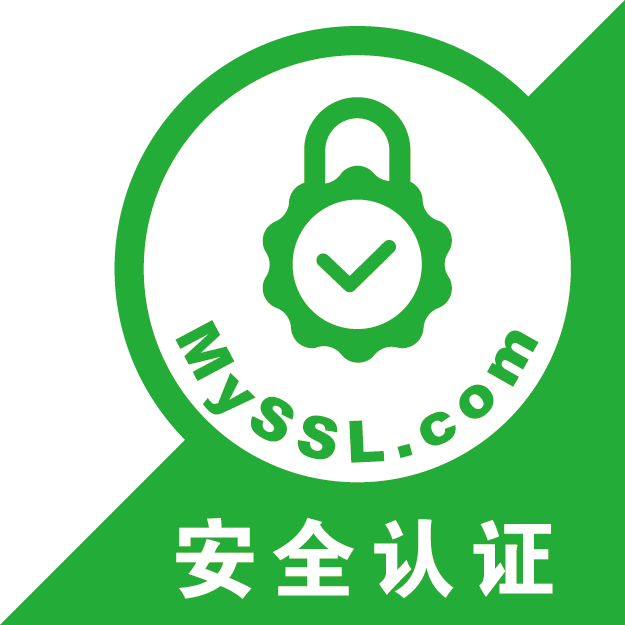开发ASP.NET Atlas服务器端Extender控件—编写客户端Behavior
作者:Dflying Chen (http://dflying.cnblogs.com/)
了解了基本概念并完成了预先需求后(请参考:开发ASP.NET Atlas服务器端Extender控件——基本概念以及预先需求),我们可以开始了开发这个ValidateUserNameExtender了。
首先,在Visual Studio中新建一个Atlas Control Project,我们给它取名为ValidateUserName。在新建以后,解决方案应该如下图所示:
可以看到,Project Template中自动为我们引用了如下程序集:
Microsoft.Web.Atlas.dll,这是Atlas的核心程序集,将被下面的Microsoft.AtlasControlExtender.dll用到。
Microsoft.AtlasControlExtender.dll,这是Microsoft为我们提供的Atlas中Extender的基类所在的程序集,我们自定义的Extender中的几个必须Class都继承于这个程序集中提供的基类。
同时,这个Project Template还为我们创建了一个JavaScript文件以及三个C#文件:
ValidateUserNameBehavior.js,这是我们的Extender中的核心部分,也是容纳一切客户端脚本的文件,其中的内容将基本等同于使用ASP.NET Atlas开发实时验证用户名是否被注册的自定义Behavior中的ValidateUserNameBehavior.js文件内容,稍后会有详细分析。Atlas的Extender实际上就是对这个客户端Behavior的封装,使其成为服务器端控件,以简化网站程序开发人员在使用时的工作。而作为控件开发人员,却增加了不少工作。
ValidateUserNameDesigner.cs,这里用来书写在Visual Studio中提供设计期支持的代码。
ValidateUserNameExtender.cs,这里用来定义我们的Extender。
ValidateUserNameProperties.cs,这里用来定义我们的Extender中所用到的属性,这些属性的值将被映射到客户端Behavior的属性上。
让我们先从ValidateUserNameBehavior.js 这个JavaScript文件开始,打开ValidateUserNameBehavior.js文件,我们会发现Template已经为我们添加了77行代码,并且在代码中有好多TODO,在代码的头部read me部分还有3个step:
创建局部变量用来存储属性值。
将这些局部变量加入到Type Descriptor中,这一步是为了让Atlas了解你的类。
为局部变量加上访问器(getter和setter)。
在开始step 1之前,我们先把Template中默认的命名空间改称我们需要的,这里我用的是Dflying.Atlas.ControlTookit.ValidateUserName,并更新所有在代码中出现的相关类名。
然后对于step 1和step 3,我们放在一起做,参考使用ASP.NET Atlas开发实时验证用户名是否被注册的自定义Behavior中的ValidateUserNameBehavior.js,应该加入CheckResultLabelID,ServiceName,MethodName,ValidMessage以及InvalidMessage五个属性,这里我只举出一个例子:
var _MethodName;
this.get_MethodName = function() {
return _MethodName;
}
this.set_MethodName = function(value) {
if (_MethodName != value) {
_MethodName = value;
this.raisePropertyChanged(‘MethodName’);
}
}
然后是step 2: this.getDescriptor = function() {
var td = Dflying.Atlas.ControlTookit.ValidateUserName.ValidateUserNameBehavior.callBaseMethod(this, ‘getDescriptor’);
td.addProperty(‘CheckResultLabelID’, String);
td.addProperty(‘ServiceName’, String);
td.addProperty(‘MethodName’, String);
td.addProperty(‘ValidMessage’, String);
td.addProperty(‘InvalidMessage’, String);
return td;
}
最后是构造函数与析够函数,同样出现在TODO中:
this.initialize = function() {
Dflying.Atlas.ControlTookit.ValidateUserName.ValidateUserNameBehavior.callBaseMethod(this, ‘initialize’);
_blurHandler = Function.createDelegate(this, blurHandler);
this.control.element.attachEvent(‘onblur’, _blurHandler);
}
this.dispose = function() {
if (_blurHandler) {
this.control.element.detachEvent(‘onblur’, _blurHandler);
_blurHandler = null;
}
Dflying.Atlas.ControlTookit.ValidateUserName.ValidateUserNameBehavior.callBaseMethod(this, ‘dispose’);
}
再加上调用Web Service的Handler以及相应的CallBack:
this.initialize = function() {
Dflying.Atlas.ControlTookit.ValidateUserName.ValidateUserNameBehavior.callBaseMethod(this, ‘initialize’);
_blurHandler = Function.createDelegate(this, blurHandler);
this.control.element.attachEvent(‘onblur’, _blurHandler);
}
this.dispose = function() {
if (_blurHandler) {
this.control.element.detachEvent(‘onblur’, _blurHandler);
_blurHandler = null;
}
Dflying.Atlas.ControlTookit.ValidateUserName.ValidateUserNameBehavior.callBaseMethod(this, ‘dispose’);
}
还有一部分Template自动生成的Code,用来连接服务器端与客户端的状态交互,在这个示例中我们不需要使用它,当然,留着也没什么坏处:
this.getClientState = function() {
var value = Dflying.Atlas.ControlTookit.ValidateUserName.ValidateUserNameBehavior.callBaseMethod(this, ‘get_ClientState’);
if (value == ”) value = null;
return value;
}
this.setClientState = function(value) {
return Dflying.Atlas.ControlTookit.ValidateUserName.ValidateUserNameBehavior.callBaseMethod(this, ‘set_ClientState’,[value]);
}
最后要注意的是该JavaScript的最后一行:
Sys.TypeDescriptor.addType(‘dflying’, ‘ValidateUserNameBehavior’, Dflying.Atlas.ControlTookit.ValidateUserName.ValidateUserNameBehavior);
其中dflying代表我们的Extender产生的客户端控件声明的前缀,ValidateUserNameBehavior代表客户端控件的标记名称,这两个名字要取好并记牢,在接下来的CS文件中也会用到。
这样,完整的ValidateUserNameBehavior.js源代码如下:
ValidateUserNameBehavior.js
// (c) Copyright Microsoft Corporation.
// This source is subject to the Microsoft Permissive License.
// See http://www.microsoft.com/resources/sharedsource/licensingbasics/sharedsourcelicenses.mspx.
// All other rights reserved.
Type.registerNamespace(‘Dflying.Atlas.ControlTookit.ValidateUserName’);
Dflying.Atlas.ControlTookit.ValidateUserName.ValidateUserNameBehavior = function() {
Dflying.Atlas.ControlTookit.ValidateUserName.ValidateUserNameBehavior.initializeBase(this);
var _blurHandler;
var _CheckResultLabelID;
var _checkResultLabel;
var _ServiceName;
var _MethodName;
var _ValidMessage = “You can use this user name.”;
var _InvalidMessage = “This user name has already been used, please choose another.”;
this.get_CheckResultLabelID = function() {
return _CheckResultLabelID;
}
this.set_CheckResultLabelID = function(value) {
if (_CheckResultLabelID != value) {
_checkResultLabel = $(value);
debug.assert(_checkResultLabel != null, “CheckResultLabelID must be set to a valid DOM element.”);
_CheckResultLabelID = value;
this.raisePropertyChanged(‘CheckResultLabelID’);
}
}
this.get_ServiceName = function() {
return _ServiceName;
}
this.set_ServiceName = function(value) {
if (_ServiceName != value) {
_ServiceName = value;
this.raisePropertyChanged(‘ServiceName’);
}
}
this.get_MethodName = function() {
return _MethodName;
}
this.set_MethodName = function(value) {
if (_MethodName != value) {
_MethodName = value;
this.raisePropertyChanged(‘MethodName’);
}
}
this.get_ValidMessage = function() {
return _ValidMessage;
}
this.set_ValidMessage = function(value) {
if (_ValidMessage != value) {
_ValidMessage = value;
this.raisePropertyChanged(‘ValidMessage’);
}
}
this.get_InvalidMessage = function() {
return _InvalidMessage;
}
this.set_InvalidMessage = function(value) {
if (_InvalidMessage != value) {
_InvalidMessage = value;
this.raisePropertyChanged(‘InvalidMessage’);
}
}
this.initialize = function() {
Dflying.Atlas.ControlTookit.ValidateUserName.ValidateUserNameBehavior.callBaseMethod(this, ‘initialize’);
_blurHandler = Function.createDelegate(this, blurHandler);
this.control.element.attachEvent(‘onblur’, _blurHandler);
}
this.dispose = function() {
if (_blurHandler) {
this.control.element.detachEvent(‘onblur’, _blurHandler);
_blurHandler = null;
}
Dflying.Atlas.ControlTookit.ValidateUserName.ValidateUserNameBehavior.callBaseMethod(this, ‘dispose’);
}
this.getDescriptor = function() {
var td = Dflying.Atlas.ControlTookit.ValidateUserName.ValidateUserNameBehavior.callBaseMethod(this, ‘getDescriptor’);
td.addProperty(‘CheckResultLabelID’, String);
td.addProperty(‘ServiceName’, String);
td.addProperty(‘MethodName’, String);
td.addProperty(‘ValidMessage’, String);
td.addProperty(‘InvalidMessage’, String);
return td;
}
function blurHandler() {
if (this.control.element.value == ”) {
_checkResultLabel.innerHTML = ”;
return;
}
Sys.Net.ServiceMethod.invoke(
_ServiceName,
_MethodName,
”,
{ userNameCandidate : this.control.element.value},
_onMethodComplete
);
}
function _onMethodComplete(result)
{
_checkResultLabel.innerHTML = result ? _ValidMessage : _InvalidMessage;
}
this.getClientState = function() {
var value = Dflying.Atlas.ControlTookit.ValidateUserName.ValidateUserNameBehavior.callBaseMethod(this, ‘get_ClientState’);
if (value == ”) value = null;
return value;
}
this.setClientState = function(value) {
return Dflying.Atlas.ControlTookit.ValidateUserName.ValidateUserNameBehavior.callBaseMethod(this, ‘set_ClientState’,[value]);
}
}
Dflying.Atlas.ControlTookit.ValidateUserName.ValidateUserNameBehavior.registerSealedClass(‘Dflying.Atlas.ControlTookit.ValidateUserName.ValidateUserNameBehavior’, Microsoft.AtlasControlExtender.BehaviorBase);
Sys.TypeDescriptor.addType(‘dflying’, ‘ValidateUserNameBehavior’, Dflying.Atlas.ControlTookit.ValidateUserName.ValidateUserNameBehavior);
值此为止,客户端部分已经完成,接下来是服务器端,也就是还剩下的那三个CS文件的编写。
转载请注明:代码学堂>编程开发 > ASP.NET > 开发ASP.NET Atlas服务器端Extender控件—编写客户端Behavior
2. 本站不保证所提供所有下载的资源的准确性、安全性和完整性,资源仅供下载学习之用!如有链接无法下载、失效或广告,请联系客服处理,有奖励!
3. 您必须在下载后的24个小时之内,从您的电脑中彻底删除上述内容资源!如用于商业或者非法用途,与本站无关,一切后果请用户自负!
4. 如果您也有好的资源或教程,您可以投稿发布,成功分享后有RB奖励和额外RMB收入!
磊宇堂正在使用的服务器 维护管理由磊宇云服务器提供支持
磊宇堂 » 开发ASP.NET Atlas服务器端Extender控件—编写客户端Behavior





